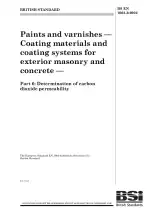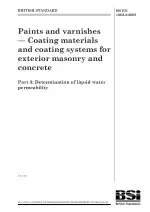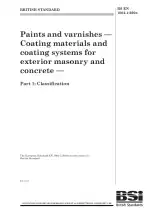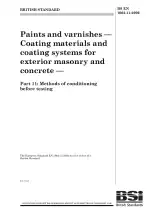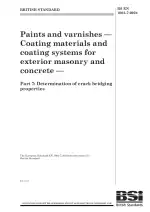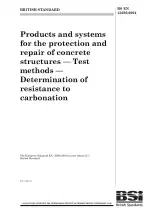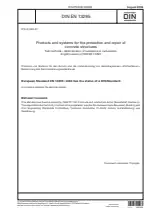BS EN 1062-6:2002 PDF Download
Standard EN SamplePaints and Varnishes: Coating Materials and Coating Systems for Exterior Masonry and Concrete - Determination of Carbon Dioxide Permeability
Also Known As:
BS EN 1062-6:2002 is a standard that outlines two different methods for determining the carbon dioxide permeability of coatings and coating systems used on exterior masonry and concrete. The standard is intended specifically for coatings applied to porous substrates like plaster and concrete.
The first method described in the standard is the "calcium hydroxide test method." This involves applying a coating to a test panel and subjecting it to carbon dioxide. The amount of carbon dioxide that permeates the coating is then measured using calcium hydroxide solution.
The second method is the "carbon dioxide transmission rate method." This method involves placing a coating sample between two chambers, one containing carbon dioxide and the other containing a solution that reacts with carbon dioxide. The rate of carbon dioxide transmission through the sample is measured over a specified time period.
This standard is important for assessing the performance of coatings and coating systems used on exterior masonry and concrete in terms of their ability to resist carbon dioxide permeation. It provides clear and standardized procedures for testing and determining carbon dioxide permeability, ensuring that coatings meet the necessary quality and performance requirements.
| Descriptors | Permeability, Stone, Coating processes, Carbon dioxide, Protective coatings, Varnishes, Paints, Organic coatings, Porous materials, Coatings, Concretes, Permeability measurement |
| ICS Codes | 87.040 - Paints and varnishes 91.080.40 - Concrete structures |
| Language(s) | English |
| ISBN | 0 580 40210 X |
| File Size | 153.6 KB |

